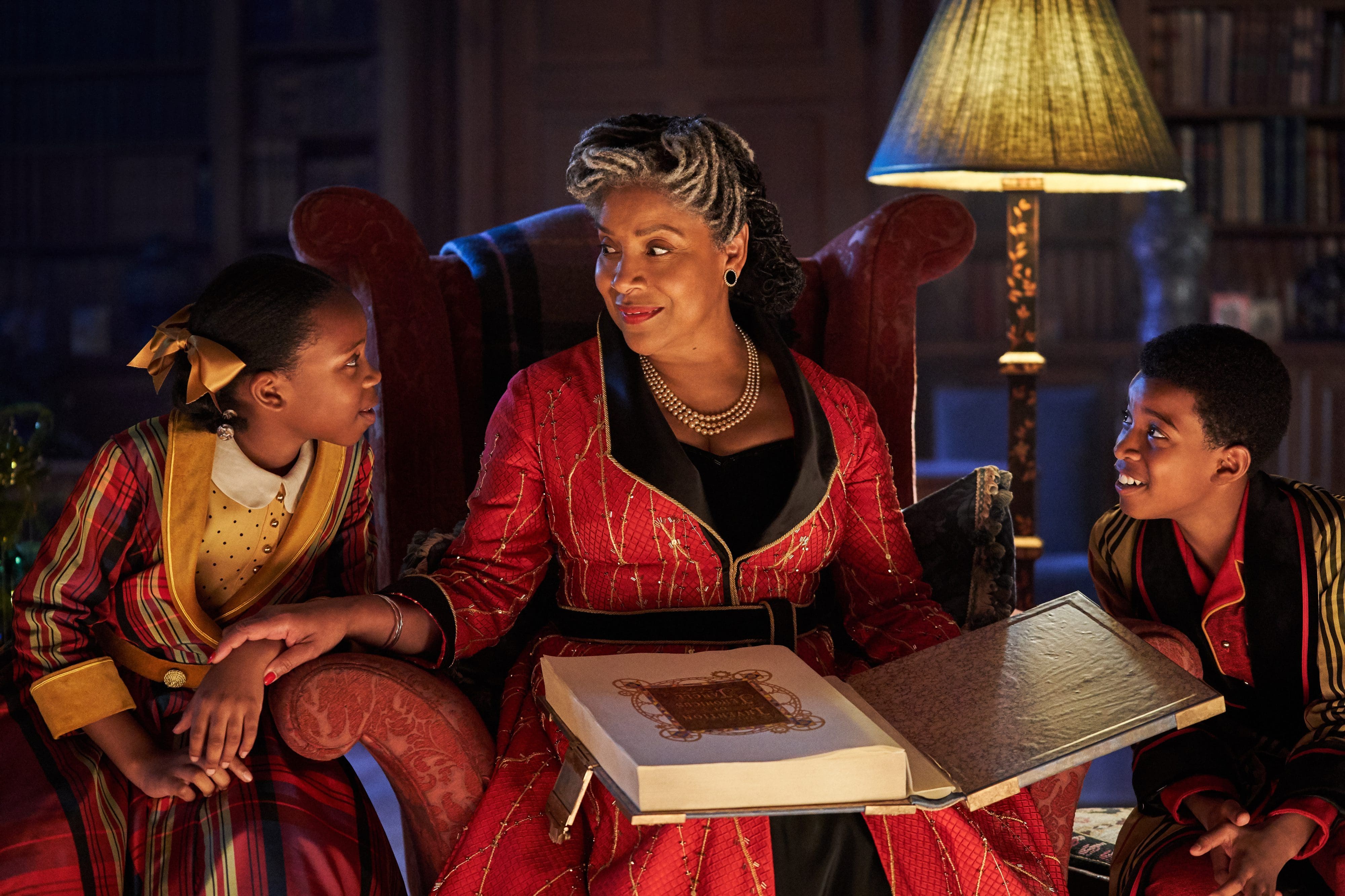
Watching Netflix’s latest Christmas movie, Jingle Jangle: A Christmas Journey, it’s hard not to keep thinking about 2017’s The Greatest Showman. For one, it’s also a musical and, like that film, its numbers are choreographed by Ashley Wallen. Its songs–written by Philip Lawrence, Davy Nathan, Michael Diskint and John Legend–are also made up of crowd-pleasing ear worms that let the characters express big emotions in even bigger spaces. The production design and costumes are intricate and, because writer-director David E. Talbert’s script makes magic real within the film’s world, fantastical. Like Showman, it’s an absolute spectacle and Jingle Jangle has the potential to be just as much of a hit with audiences.
Though Showman was technically a biopic, Jingle Jangle is pure fiction. When we first meet Jeronicus Jangle (Justin Cornwall), he’s a young, brilliant inventor with a successful toy business and a loving wife and daughter. However, after Jeronicus’s apprentice Gustafson (played by Miles Barrow in early scenes and Keegan-Michael Key for the rest) steals his book of inventions and his wife dies tragically, Jeronicus loses his spark and we catch up with him years later, now played by Forest Whitaker, as his shop is in danger of closing forever. Desperate to mend his broken relationship with his daughter, Jessica (Anika Noni Rose), he reaches out and Jessica sends her own daughter, Journey (Madalen Mills), to spend Christmas with him. Like her mother and grandfather before her, Journey has a gift for the magic of invention and may just hold the key to saving Jeronicus and his business.
Unlike The Greatest Showman, Jingle Jangle doesn’t start with a musical number, so, the first thing the audience will appreciate about it is the way it looks. Gavin Bocquet’s production design is detailed and colorful, delivering a world just slightly more fantastic than our own. Likewise, Michael Wilkinson’s costumes give a sort of technicolor, steam-punk, Victorian vibe and every garment moves beautifully whenever the characters start to dance. That first happens when young Jeronicus begins to sing “This Day”, a triumphant expression of joy and magic that both energizes the audience and sets up the characters and their world.
As should be true of most musicals, Jingle Jangle’s biggest asset is its songs and there are some show-stopping numbers throughout. Though Key absolutely demolishes his braggadocios villain song, “Magic Man G,” perhaps the film’s best is “Miles and Miles”, a seduction sung by Ms. Johnston (Marisha Wallace), Jeronicus’s postwoman. Wallace performs the number for the back row, slinking around Jeronicus’s shop as he strenuously tries to avoid her advances. It’s pure comedy, but the whimsy is only heightened when Ms. Johnston is not only joined by three backup singers, but Jeronicus comments on them, suggesting that this world is so magical that people really do just break into song sometimes. It’s a really fun, surprising turn and a feat Talbert pulls again and again through clever choices in scripting and filmmaking.
That said, despite its many assets, there is one aspect where Jingle Jangle suffers in comparison to The Greatest Showman: its pacing. Showman’s numbers come so quickly and consistently that it’s easy to miss–or even forgive–how slight its story is. Sure, the movie doesn’t earn its underdog narrative, but who cares when it’s so thrilling to watch Zac Efron and Zendaya’s trapeze love duet?
Though Jingle Jangle is only about 15 minutes longer that that film, it feels much denser. Granted, that’s because its plot and character work are more complex. It has to service both a redemption arc for Jeronicus and a story of self-actualization for Journey and it does both well. However, because the film’s focus is so split, there are moments when each arc drags a bit so that the other one can catch up. We first meet Jeronicus as a bright, young inventor, but once Whitaker takes over the role, the character spends much of the film in the same mopey, insecure, even occasionally unlikable mode that it becomes repetitive. There are only so many times the audience can watch him dismiss Journey or be exasperated by Ms. Johnston’s affections before it wishes the character’s arc would start advancing already.
Admittedly, the music often does push the narrative forward just when the film most needs it. Journey’s “I Want” song, “Square Root of Possible,” comes just as it seems she may not become much more than a precocious child who’s merely a plot device in Jeronicus’s journey. However, while Jingle Jangle starts with a bang musically, it does lose steam as the plot begins to dominate. Legend et al. have crafted some really wonderful songs, but the film ends on a reprise of “This Day” that doesn’t quite manage to match the joy and excitement of its initial appearance and it honestly feels like the whole film is chasing that opening number’s greatness.
Though Jingle Jangle: A Christmas Journey does lose a bit of magic as it goes on, it is still a really well-made film that families will genuinely enjoy watching together. It has a lovely message for kids, great songs, incredible production design and a diverse cast that is filled with solid performances. It may not have been made for a theater experience, but it’s big and bright enough that it almost manages to recreate the magic of seeing big screen spectacle.

